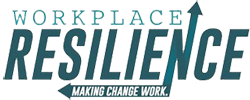 It was years ago, but I still remember it vividly. My husband and my son were in the backyard taking apart the very used trampoline. Full of tears, it had reached the point where it was no longer safe for the kids. There was a new one sitting in a box in the backyard. However, before they could assemble the new one, they needed to tear apart the old one. The task seemed pretty simple.
It was years ago, but I still remember it vividly. My husband and my son were in the backyard taking apart the very used trampoline. Full of tears, it had reached the point where it was no longer safe for the kids. There was a new one sitting in a box in the backyard. However, before they could assemble the new one, they needed to tear apart the old one. The task seemed pretty simple.
The trampoline was made up of 2-foot long curved metal tubes that you put together to form the circle shape. They were pulling the pieces off at a good pace when they hit a snag. You see, one tube refused to pull apart from the other tube. It was jammed in there and refused to budge. When I first looked out the window, I saw them working hard on that one end. They had pulled off enough tubes that they were holding about ½ of the original circle. They hammered, pulled and tried just about everything to get the tube to release from the others. Nothing worked.
The next time I looked out, 20 minutes had passed. I walked outside and saw that they were still working on the same tube, trying everything to get it unstuck. They were laser focused on solving this issue and totally engrossed in their work. I yelled to them and asked if that was still the same tube. They said yes and it was clear that I was breaking their concentration. I then asked them why they don’t just try to pull apart the tubes at the other end of the ½ circle. They looked at me with bewilderment and tried it. Each one came apart and they were left with the two they had been working on.
“You are surrounded by simple, obvious solutions that can dramatically increase your income, power, influence and success. The problem is, you just don’t see them.”
Jay Abraham
This story illustrates what happens to many people in the workplace. For a variety of reasons, we fail to see the forest for the trees. We’re so intent on solving the problem and focusing in on the details that we totally miss the whole picture. We miss the simple answer that is right in front of our eyes.
This kind of thinking can cause organizations to take a very wrong turn and make poor decisions that can lead to even poorer outcomes.
There’s a good chance that right now, you’re grappling with some decisions or problems and wondering about the solution. Here’s my suggestion; step back and take a fresh look on the whole situation. Open your mind and make a list of the many ways you could solve the problem. Take a break from the situation and do something totally different. Truly listen to others that might have a different approach than your own.
What I’m suggesting to you is to get outside your own box. You have learned to solve problems in the same manner. You need a new perspective.
Just don’t get stuck in your head without taking a step back.















